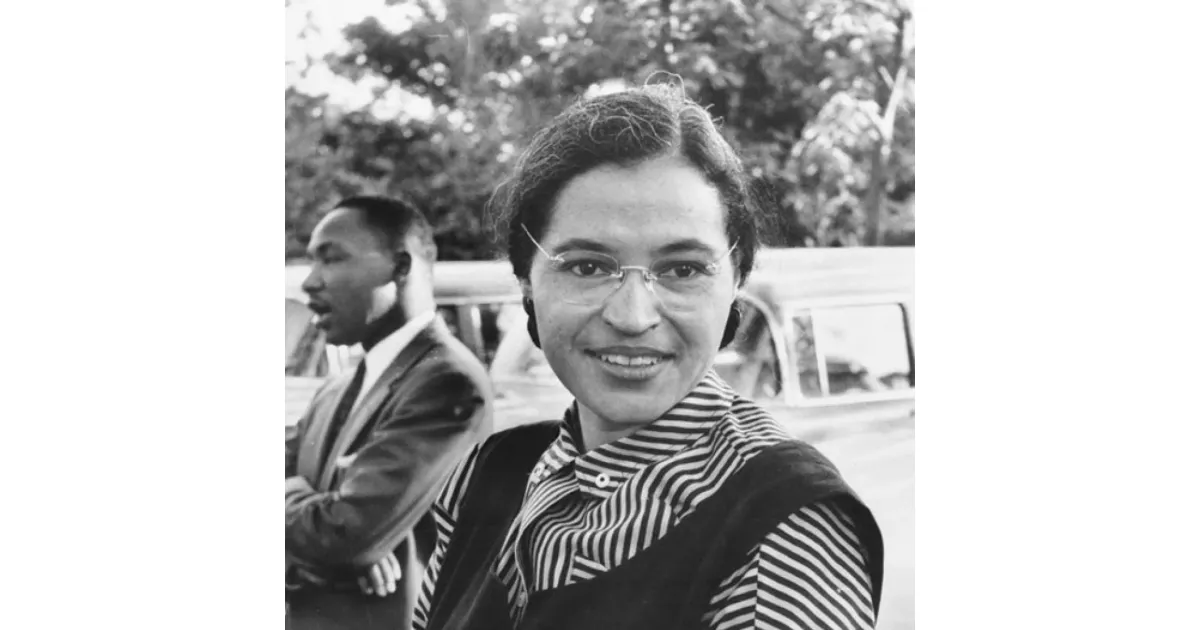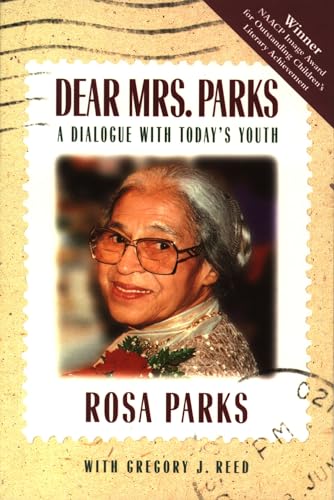Rosa Parks was a pivotal figure in the American Civil Rights Movement. In 1955, her refusal to give up her seat to a white passenger on a segregated bus in Montgomery, Alabama, led to her arrest and sparked the Montgomery Bus Boycott. This boycott, a major event in the Civil Rights Movement, lasted over a year and ultimately led to the Supreme Court ruling that segregation on buses was unconstitutional. Parks' courageous act and subsequent activism made her an icon and earned her the title of 'mother of the civil rights movement'.
1900: Streetcar Segregation Ordinance Passed
In 1900, Montgomery passed a city ordinance segregating streetcar passengers by race, before state-wide segregation was implemented.
1901: Jim Crow Laws Codified
In 1901, a state constitutional convention formally codified Jim Crow segregation laws in Alabama, enforcing racial separation in most aspects of life.
1902: Boycotts Against Segregated Streetcars
Between 1900 and 1902, Montgomery's Black residents conducted boycotts against segregated streetcars, coinciding with similar protests in other southern cities.
February 4, 1913: Rosa Parks' Birth
On February 4, 1913, Rosa Louise McCauley Parks was born. She later became a prominent American civil rights activist.
1928: Attended Booker T. Washington Junior High School
In 1928, after the closure of the Montgomery Industrial School for Girls, Rosa Parks transferred to Booker T. Washington Junior High School.
1931: Met Raymond Parks
In 1931, Rosa Parks, at age 18, was introduced to her future husband, Raymond Parks, who was 28 at the time.
December 18, 1932: Married Raymond Parks
On December 18, 1932, Rosa Parks married Raymond Parks at her mother's house. Following the marriage, they moved to a rooming house in Montgomery.
1933: Completed High School
In 1933, with Raymond's encouragement, Rosa Parks completed her high school education, a rare achievement for Black people in Alabama at the time.
1940: Black Voter Registration Statistics
As of 1940, less than 0.1% of Black Montgomerians were registered to vote, which shows the restrictions and obstacles faced by the African Americans.
1941: Worked at Maxwell Air Force Base
In 1941, Rosa Parks began working at Maxwell Air Force Base, where she experienced an integrated environment, contrasting with the segregated conditions she faced elsewhere.
December 1943: Elected NAACP Secretary
In December 1943, Rosa Parks was elected secretary of the Montgomery chapter of the National Association for the Advancement of Colored People (NAACP).
1943: Confrontation with Bus Driver James F. Blake
In 1943, Rosa Parks had an encounter with bus driver James F. Blake, who demanded she re-board from the back after paying her fare in the front. She refused and sat in the white section, leading to a confrontation.
1943: Joined NAACP
In 1943, Rosa Parks joined the Montgomery chapter of the National Association for the Advancement of Colored People (NAACP) and also attempted to register to vote for the first time.
1944: Investigated Recy Taylor Case
In 1944, Rosa Parks began investigating the gang rape of Recy Taylor, a Black woman from Abbeville, and organized "The Committee for Equal Justice for Mrs. Recy Taylor" after a grand jury declined to indict the perpetrators.
1944: Arrest of Viola White
In 1944, Viola White, who was an employee at Maxwell Air Force Base, was arrested for refusing to give up her seat on a Montgomery bus.
1945: Registered to Vote
In 1945, Rosa Parks successfully registered to vote after multiple attempts, encouraged by NAACP activist E. D. Nixon.
1945: Second Grand Jury Hearing for Recy Taylor Case
In 1945, despite pressure from civil rights activists, the state failed to secure indictments for the assailants in the Recy Taylor case after a second grand jury hearing.
1949: Arrest of Mary Wingfield
In 1949, Mary Wingfield was arrested for refusing to give up her seat on a Montgomery bus.
1952: Organized Support for Jeremiah Reeves
In 1952, Rosa Parks organized support for Jeremiah Reeves, who was accused of raping a white woman.
October 1954: Arrest of Mary Louise Smith
In October 1954, teenager Mary Louise Smith was arrested for declining to give up her seat on a Montgomery bus.
1954: Worked as a Seamstress
In 1954, Rosa Parks began working as a seamstress for Clifford and Virginia Durr, a white couple, who became her friends and encouraged her activism.
March 1955: Arrest of Claudette Colvin
In March 1955, Claudette Colvin, a fifteen-year-old student, was arrested for refusing to give up her seat on a bus in Montgomery.
April 29, 1955: Arrest of Aurelia Browder
On April 29, 1955, Aurelia Browder was arrested for refusing to give up her seat on a Montgomery bus.
August 1955: Attended Montgomery Meeting on Emmett Till Lynching
In August 1955, Rosa Parks attended a Montgomery meeting concerning the lynching of Emmett Till and was heartened by the attention the case received.
October 21, 1955: Arrest of Susie McDonald
On October 21, 1955, Susie McDonald was arrested for not giving up her seat on a Montgomery bus.
December 1, 1955: Boarded Bus Driven by James F. Blake
On December 1, 1955, Rosa Parks boarded a bus around 5:30 p.m. after leaving work and purchasing items from Lee's Cut-Rate Drug. She sat in the middle section and did not initially realize that James F. Blake was the driver.
December 5, 1955: Montgomery Bus Boycott Trial and Planning
On December 5, 1955, the day of Rosa Parks's trial, the Women's Political Council (WPC) planned a one-day boycott of Montgomery buses. This was after Rosa Parks's arrest, and her subsequent consultation with her family, who approved the decision despite concerns about potential violent retaliation. Attorney Fred Gray agreed to represent Parks in court. The WPC, led by Jo Ann Robinson, produced 35,000 leaflets announcing the boycott.
December 1955: Bus Arrests Before Rosa Parks
Before December 1955, several people like Viola White, Mary Wingfield, Mary Louise Smith, Claudette Colvin, Aurelia Browder and Susie McDonald were arrested for not giving up their seats on buses in Montgomery.
1955: Visit to Black Panther School
During the 1979/1980 academic year, Rosa Parks visited the Black Panther school in Oakland, California. As part of her visit, she attended a student play dramatizing her refusal to move in 1955, and stayed after to answer the students' questions.
1955: Refusal to Move on Bus
In 1955, Rosa Parks refused to give up her seat on a bus in Montgomery, Alabama, violating segregation laws. This action sparked the Montgomery bus boycott.
1955: Arrest and Bus Boycott
In 1955, Rosa Parks was arrested for refusing to give up her seat on a bus, leading to a widespread boycott organized by the Women's Political Council. The boycott lasted 381 days until bus segregation was deemed unconstitutional.
January 1956: Job Loss and Boycott Hardships
In January 1956, Rosa Parks was terminated from her job as a seamstress at Montgomery Fair due to her involvement in the Montgomery bus boycott. Her husband, Raymond, was also terminated from his job at Maxwell Air Force Base a week later. Additionally, the Montgomery Police Commissioner initiated a "Get Tough" policy, harassing Black pedestrians and boycott participants. Boycott organizers, including Rosa Parks, received regular death threats.
February 1956: Financial Assistance and Health Problems
In February 1956, Martin Luther King Jr. requested a disbursement of $250-$300 for Rosa Parks from the MIA relief fund due to financial hardship. The funds were authorized. Rosa Parks developed severe health problems, including chronic insomnia, stomach ulcers, and a heart condition. She traveled to Detroit, Michigan, and addressed United Auto Workers (UAW) Local 600.
December 20, 1956: Supreme Court Orders Bus Integration
On December 20, 1956, after the Supreme Court upheld the district court's ruling and rejected appeals, the integration of Montgomery's buses was ordered. As a result, Martin Luther King Jr. called off the Montgomery bus boycott, which had lasted 381 days.
1956: Browder v. Gayle Lawsuit
In 1956, Mary Louise Smith, Claudette Colvin, Aurelia Browder, and Susie McDonald were the plaintiffs in the lawsuit Browder v. Gayle.
August 1957: Move to Detroit
In August 1957, due to economic insecurity, safety concerns, and divisions within the MIA leadership, Rosa Parks left Montgomery and moved to Detroit, where her brother and cousins lived. The MIA, embarrassed by her decision, provided her with a $500 "going-away present".
October 1957: Work at Holly Tree Inn
In October 1957, Rosa Parks moved to Hampton, Virginia, for a brief period to work as a hostess at the Holly Tree Inn.
1957: Jeremiah Reeves Executed
In 1957, Jeremiah Reeves, whom Rosa Parks had supported, was executed.
1957: Relocation to Detroit
In 1957, due to financial hardship and health problems stemming from her involvement in the bus boycott, Rosa Parks relocated to Detroit, Michigan.
1959: Loss of Apartment
In 1959, Rosa Parks and her family lost their apartment and moved into a meeting hall for the Progressive Civic League (PCL), where Rosa managed the treasury at the PCL's credit union and Raymond served as the meeting hall's caretaker.
1960: Health Problems and Financial Debt
In 1960, Rosa Parks's health deteriorated, requiring multiple surgeries. She and her family incurred significant debt due to unpaid medical bills. She received donations from the MIA and PCL, and the Black press began to write about her financial difficulties.
1962: SCLC Convention Attendance
In 1962, Rosa Parks attended the SCLC convention in Birmingham, Alabama.
August 1963: March on Washington Participation
In August 1963, Rosa Parks traveled to Washington, D.C. to participate in the March on Washington. She was honored alongside other prominent women in the civil rights struggle during the event's "Tribute to Women" segment.
1964: Role in John Conyers's Campaign
In 1964, Rosa Parks played a crucial role in John Conyers's congressional campaign. She persuaded Martin Luther King Jr. to endorse Conyers, boosting his profile. After Conyers was elected, he hired her as a secretary and receptionist for his congressional office in Detroit.
1965: Selma to Montgomery Marches
In 1965, Rosa Parks attended the Selma to Montgomery marches and supported the Lowndes County Freedom Organization and the Freedom Now Party.
1965: Receiving the "Dignity Overdue" award
In 1965, Rosa Parks received the "Dignity Overdue" award from the Afro-American Broadcasting Company and was honored at a ceremony held at the Ford Auditorium in Detroit.
1967: Views on Gradualism
In 1967, Rosa Parks stated in an interview that she did not believe in gradualism regarding civil rights improvements.
1968: Black Power Movement Participation
In 1968, Rosa Parks took part in the Black power movement, attending the Philadelphia Black power conference.
1968: Receiving the Martin Luther King Jr. Award
In 1968, The Capitol Press Club presented Rosa Parks with the Martin Luther King Jr. Award.
1972: National Black Political Convention
In 1972, Rosa Parks continued to support the Black power movement by attending the National Black Political Convention in Gary, Indiana.
1972: Receiving the Rosa Parks Freedom Award
In 1972, Rosa Parks received the Rosa Parks Freedom Award from the SCLC.
July 1975: Joanne Little Defense Committee
In July 1975, Rosa Parks played a key role in the establishment of the Detroit chapter of the Joanne Little Defense Committee.
1976: Detroit's 12th street renamed "Rosa Parks Boulevard"
In 1976, at the behest of her friend Louise Tappes, Detroit's 12th street was renamed "Rosa Parks Boulevard".
1977: Death of Raymond Parks
In 1977, Rosa Parks's husband, Raymond, died of throat cancer, causing her personal loss.
1979: Visit to Black Panther School
During the 1979/1980 academic year, Rosa Parks visited the Black Panther school in Oakland, California. As part of her visit, she attended a student play dramatizing her refusal to move in 1955, and stayed after to answer the students' questions.
1979: Featured in Supersisters trading card set
In 1979, Rosa Parks was featured on one of the cards in the Supersisters trading card set, card no. 27.
1979: Death of Rosa Parks's Mother
In 1979, Rosa Parks's mother died, causing her personal loss.
1979: Receiving the Spingarn Medal
In 1979, the NAACP awarded Rosa Parks the Spingarn Medal, citing her "quiet courage and determination" in refusing to relinquish her seat.
1980: Visit to Black Panther School
During the 1979/1980 academic year, Rosa Parks visited the Black Panther school in Oakland, California. As part of her visit, she attended a student play dramatizing her refusal to move in 1955, and stayed after to answer the students' questions.
1980: Receiving the Martin Luther King Jr. Award from the NAACP
In 1980, the NAACP further recognized Rosa Parks with their own Martin Luther King Jr. Award.
1981: Support for Arrested Activists
In 1981, Rosa Parks wrote to attorney Chokwe Lumumba in support of arrested activists from the Black Liberation Army, the May 19th Communist Organization, the RNA, and Weather Underground.
1983: Induction into the Michigan Women's Hall of Fame
In 1983, Rosa Parks was inducted into the Michigan Women's Hall of Fame.
1984: Receiving the Candace Award
In 1984, Rosa Parks received the Candace Award from the National Coalition of 100 Black Women.
1984: Support for Jesse Jackson's Presidential Campaign
In 1984, Rosa Parks supported Jesse Jackson's presidential campaign.
1985: NAACP Detroit Chapter Election
In 1985, Rosa Parks and Joe Madison unsuccessfully ran for president and vice president of the NAACP's Detroit chapter.
1987: Co-founding the Rosa and Raymond Parks Institute for Self Development
In 1987, Rosa Parks co-founded the Rosa and Raymond Parks Institute for Self Development with Elaine Eason Steele to develop youth leaders' capabilities in advancing civil rights initiatives. The institute also offered "Pathways to Freedom" bus tours, introducing young people to important civil rights and Underground Railroad sites.
1987: Founded Rosa and Raymond Parks Institute
In 1987, Rosa Parks co-founded the Rosa and Raymond Parks Institute for Self Development with Elaine Eason Steele.
1988: Jesse Jackson's Presidential Campaign
In 1988, Rosa Parks supported Jesse Jackson's presidential campaign and spoke on his behalf at the Democratic National Convention.
1990: Speech calling for the release of Nelson Mandela
In 1990, at a Washington, D.C. gala celebrating her birthday, Rosa Parks gave a speech calling for the release of anti-apartheid activist Nelson Mandela.
1991: Bronze sculpture displayed at National Portrait Gallery
In 1991, a bronze sculpture of Rosa Parks was displayed at the National Portrait Gallery.
1992: Authoring 'Rosa Parks: My Story'
In 1992, Rosa Parks authored the autobiographical work, 'Rosa Parks: My Story'.
1992: Receiving the Peace Abbey Courage of Conscience Award
In 1992, Rosa Parks received the Peace Abbey Courage of Conscience Award.
1993: Induction into the National Women's Hall of Fame
In 1993, Rosa Parks was inducted into the National Women's Hall of Fame.
August 30, 1994: Robbery and assault in her home
On August 30, 1994, at the age of 81, Rosa Parks was robbed and assaulted in her home. Joseph Skipper broke into her home, assaulted her and stole $103.
1994: Attendance at National Coalition of Blacks for Reparations in America meeting
In 1994, Rosa Parks attended the meeting of the National Coalition of Blacks for Reparations in America in Detroit alongside Jesse Jackson and Queen Mother Moore.
1995: Participation in the Million Man March
In 1995, at the invitation of Louis Farrakhan, Rosa Parks participated in the Million Man March alongside Moore, Betty Shabazz, Dorothy Height, and Maya Angelou.
1996: Receiving the Presidential Medal of Freedom
In 1996, Rosa Parks received the Presidential Medal of Freedom from Bill Clinton.
1997: Michigan designates February 4 as Rosa Parks Day
In 1997, Michigan designated February 4 as Rosa Parks Day.
1997: Authoring 'Dear Mrs. Parks'
In 1997, Rosa Parks authored the autobiographical work, 'Dear Mrs. Parks'.
1999: Filing lawsuit against Outkast
In 1999, Rosa Parks filed a $5 billion lawsuit against American hip-hop duo Outkast claiming that the duo's song "Rosa Parks", released on their 1998 album Aquemini, used her name without permission, harming her reputation.
1999: Cameo appearance on Touched by an Angel
In 1999, Rosa Parks filmed a cameo appearance for the television series Touched by an Angel.
1999: Receiving the Congressional Gold Medal and Windsor-Detroit International Freedom Festival Freedom Award
In 1999, Rosa Parks was awarded the Congressional Gold Medal and was honored with the Windsor–Detroit International Freedom Festival Freedom Award. Time also named her one of the 20 most influential figures of the 20th century.
2000: Receiving Alabama awards
In 2000, Rosa Parks received both the Alabama Governor's Medal of Honor and the Alabama Academy Award.
2000: Opening of the Rosa Parks Library and Museum
In 2000, Troy University opened the Rosa Parks Library and Museum at the site of Parks's arrest at the cost of $10 million.
2001: Portrayal in the film 'Boycott'
In 2001, Rosa Parks was played by Iris Little-Thomas in the film 'Boycott', directed by Clark Johnson.
2001: Signing open letter against military response after September 11 attacks
In 2001, following the September 11 attacks, Rosa Parks joined Danny Glover, Harry Belafonte, and Gloria Steinem in signing an open letter that cautioned against a "military response" and advocated for international collaboration.
2002: Portrayal in 'The Rosa Parks Story'
In 2002, Angela Bassett played Rosa Parks in the biopic 'The Rosa Parks Story', directed by Julie Dash.
2002: Receiving eviction notice
In 2002, Rosa Parks received an eviction notice from her apartment for non-payment of rent due to age-related decline. Her rent was later paid through collections.
2002: Parks's apartment placed on National Register of Historic Places
In 2002, Rosa Parks's apartment in Montgomery was placed on the National Register of Historic Places.
2002: Controversy surrounding depiction in 'Barbershop'
In 2002, the film 'Barbershop' caused controversy due to a scene discussing Rosa Parks's actions, prompting criticism and calls for a boycott.
2003: Boycott of NAACP Image Awards
In 2003, Rosa Parks herself boycotted the NAACP Image Awards ceremony, which Cedric the Entertainer hosted, due to controversy over his role in the movie Barbershop.
2003: Receiving the International Institute Heritage Hall of Fame Award
In 2003, Rosa Parks received the International Institute Heritage Hall of Fame Award.
2003: Bus on which Parks refused to move placed on display at The Henry Ford museum
In 2003, the bus on which Rosa Parks refused to move was restored with funding from the Save America's Treasures program and placed on display at The Henry Ford museum.
2004: Filing another suit in Outkast case
After a federal court dismissed the lawsuit, in 2004, Rosa Parks filed another suit against BMG Rights Management, Arista Records, and LaFace Records in the Outkast case.
2004: Landlord forgiving back rent
In 2004, after Rosa Parks's impending eviction was publicized, her landlord forgave the back rent and allowed her to live rent-free in the building for the remainder of her life.
October 24, 2005: Rosa Parks' Death
October 24, 2005 marks the day of Rosa Parks's death. She was an American civil rights activist known for her role in the Montgomery bus boycott.
October 29, 2005: Approval of resolution allowing remains to lie in state
On October 29, 2005, Concurrent Resolution 61 was approved, allowing Rosa Parks's remains to lie in state at the United States Capitol rotunda.
2005: Memorial Services and Honors
After her death in 2005, Rosa Parks was honored with public viewings and memorial services in multiple cities, including lying in state at the United States Capitol rotunda. She also received numerous awards and honors.
2005: Settlement reached in Outkast lawsuit
In 2005, a settlement was reached in the lawsuit between Rosa Parks and Outkast, wherein Outkast and BMG without admitting liability agreed to pursue projects that would "enlighten today's youth about the significant role Rosa Parks played in making America a better place for all races".
2005: Authorization of Parks statue in National Statuary Hall
In 2005, after Rosa Parks's death, President Bush signed H.R. 4145, authorizing a statue of Parks to be placed in the National Statuary Hall at the United States Capitol.
2006: Renaming of Hempstead Transit Center
In 2006, Nassau County, New York County Executive Tom Suozzi announced that the Hempstead Transit Center would be renamed the Rosa Parks Hempstead Transit Center in Rosa Parks's honor.
2009: Naming of Rosa Parks Station and opening of Rosa Parks Transit Center
In 2009, the Portland Boulevard station of the Los Angeles County MetroRail system was officially named Rosa Parks Station, and the Rosa Parks Transit Center opened in downtown Detroit.
2010: Naming of Asteroid 284996 Rosaparks
In 2010, the asteroid 284996 Rosaparks, discovered by the Wide-field Infrared Survey Explorer, was named in Rosa Parks's memory.
February 4, 2013: Centennial Anniversary of Rosa Parks's Birth
On February 4, 2013, Obama proclaimed February 4, 2013, as the "100th Anniversary of the Birth of Rosa Parks", calling "upon all Americans to observe this day with appropriate service, community, and education programs to honor Rosa Parks's enduring legacy".
2013: Unveiling of statue in National Statuary Hall
In 2013, a statue of Rosa Parks was unveiled in the National Statuary Hall at the United States Capitol, with President Obama and House Speaker John Boehner in attendance.
2014: Statue dedication at Essex Government Complex
In 2014, a statue of Rosa Parks was dedicated at the Essex Government Complex in Newark, New Jersey.
2015: Opening of Rosa Parks station in Paris, France
In 2015, Rosa Parks station opened in Paris, France.
2015: Publication of 'The Rebellious Life of Mrs. Rosa Parks'
In 2015, Theoharis published her biography, 'The Rebellious Life of Mrs. Rosa Parks', arguing that the popular narrative of Rosa Parks obscures her lifelong radical activism.
January 4, 2016: Lawsuit Review
On January 4, 2016, the United States Court of Appeals for the Eleventh Circuit reviewed a lawsuit by the Rosa and Raymond Parks Institute for Self Development against Target, regarding the use of Rosa Parks's name and likeness in merchandise. The court ruled that the use was permissible under Michigan law due to its historical context within the Civil Rights Movement.
2016: Gary Tyler's Release
In 2016, Gary Tyler, whom Rosa Parks had advocated for, was freed after 41 years in prison.
2016: Relocation of former residence to Germany
In 2016, Rosa Parks's former residence in Detroit was threatened with demolition, and a Berlin-based American artist, Ryan Mendoza, arranged to have the house disassembled, moved to his garden in Germany, and partly restored and converted into a museum honoring Parks.
2018: Return of house to the United States and unveiling of sculpture at Georgia Tech
In 2018, Rosa Parks's house was moved back to the United States and eventually exhibited at the WaterFire Arts Center in Providence, Rhode Island. Continuing the Conversation, a public sculpture of Parks, was unveiled on the main campus of Georgia Tech.
2018: Release of 'Rosa' episode of Doctor Who
In 2018, the episode 'Rosa' of the science-fiction television series 'Doctor Who', which centered on Rosa Parks, was released and received positively.
2019: Release of Barbie doll in Parks's likeness
In 2019, Mattel released a Barbie doll in Rosa Parks's likeness as part of their "Inspiring Women" series.
2019: Unveiling of another statue in Montgomery
In 2019, another statue of Rosa Parks was unveiled in Montgomery.
2020: Backlash against Nicki Minaj's song "Yikes"
In 2020, rapper Nicki Minaj received backlash online for incorporating Rosa Parks into her song "Yikes", where she rapped, "All you bitches Rosa Park, uh-oh, get your ass up".
2021: Addition of a bust to the Oval Office
In 2021, a bust of Rosa Parks was added to the Oval Office when Joe Biden began his presidency.
2022: Release of 'The Rebellious Life of Mrs. Rosa Parks' documentary
In 2022, the documentary 'The Rebellious Life of Mrs. Rosa Parks', inspired by Theoharis's biography, was released on Peacock.
2023: Approval of statue for Alabama State Capitol grounds
In 2023, a statue of Rosa Parks was approved for the Alabama State Capitol grounds.
2024: Monetary Value Update
In 2024, the equivalent value of Rosa Parks's fine ($10) and court fees ($4) from 1955 is $164.
Mentioned in this timeline

Nicki Minaj born Onika Tanya Maraj-Petty is a highly influential...

Martin Luther King Jr was a pivotal leader in the...
Barbie is a fashion doll created by Ruth Handler and...
Germany officially the Federal Republic of Germany is a Western...

Inflation in economics signifies an increase in the average price...
Virginia officially the Commonwealth of Virginia is a state located...
Trending

1 month ago Mike Tomlin Rumored to Want a Change, Possibly Leaving Steelers After Season.

1 month ago Zion Williamson sidelined for weeks with adductor injury, casting doubt on potential.

1 month ago Joe Root Scores Century in Ashes Second Test Against Australia, Brisbane.

3 months ago Russell Wilson and Sean Payton Engage in a Heated War of Words
2 months ago Pittsburgh weekend weather: Showers possible for College Gameday, cooler temperatures expected.

7 months ago Stephen Graham, Steve Carell, and Colin Farrell compete for TV Movie performance awards.
Popular

Stranger Things created by the Duffer Brothers is a popular...

XXXTentacion born Jahseh Dwayne Ricardo Onfroy was a controversial yet...

Kelsey Grammer is an accomplished American actor producer and singer...

Candace Owens is an American conservative political commentator and author...

Bernie Sanders is a prominent American politician currently serving as...

Melania Trump a Slovenian-American former model has served as First...



